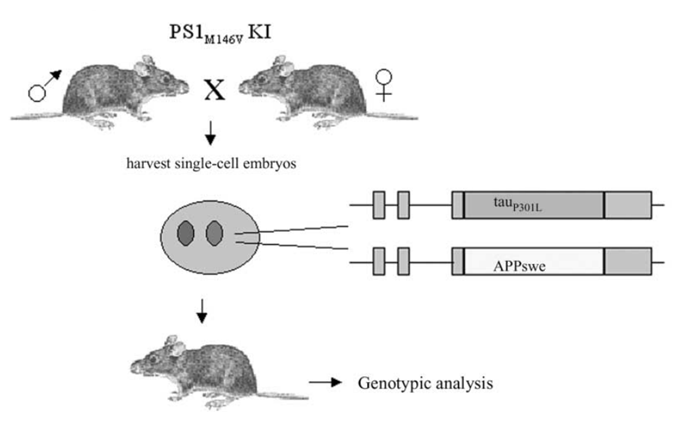Transgenic Animal Models
With the discovery of AD-related genes, scientists have created a large number of transgenic animals mimicking hallmarks in human AD through introducing genetic modification of gene of interest. This gene editing approach facilitated AD-related pathological mechanism or screen drugs studies. Mice are most commonly used organism for AD considering they are relatively lower in cost, shorter in life span and easier to manipulate in gene editing. In addition, rats and nonmammalian species such as zebrafish and nematodes can also be used as AD model animals.
Creative Bioarray specializes in providing customized pharmacodynamic research services to help customers assess the efficacy of drug candidates and study the associated pathological mechanisms through transgenic animal models.
Transgenic animal models include but not limited to:
- APP transgenic models
- APPSL transgenic mouse model
- ApoB-100 transgenic mouse model
- TBA2.1 transgenic mouse model
- Tg4-42 (TBA83) mouse model
- SD- Apptm1sage
- Tg2576 mice model
- Tau transgenic models
- Tau (P301L) [JNPL3] mouse
- ApoE transgenic models
- Humanized ApoE2 mouse
- Humanized ApoE3 mouse
- Humanized ApoE4 mouse
- SD- ApoE tm1sage
- SD- hApoE4KItm1sage
- BDNF transgenic models
- SD- Bdnf tm1sage
- Double transgenic models
- APPSL x hQC transgenic mouse model
- ApoB x APP transgenic mouse model
- APPSWE-Tau [TAPP] mouse
- Triple transgenic models
- Five transgenic models
- 5xFAD transgenic mouse model
Our Capabilities
- Behavioral and cognitive function tests
- Histopathology assays
- Mechanism/ signaling pathway studies
- Biomarkers discovery
Assays available
- Learning and memory deficits tests
- Synaptic impairment
- Oxidative stress
- Neuroinflammation
- Phosphorylated tau
- Glycogen synthase kinase-3 beta (GSK3β)
- Neurofilament Light Chain levels
- Neuronal loss
- β-AP level
- Plaque load
- β-sheet load
- pE(3)-Aβ load
- Enzyme activity related to cholinergic system
- NMDA receptor function and excitotoxicity
- Mitochondrial dysfunction
- Brain slice staining and synaptic electrophysiology
- Blood brain barrier homeostasis
- Cerebral vascular angiopathy (CAA)
With years of hard working and continuous development, as a senior leader specialize in AD research with enormous industrial experience, Creative Bioarray is exceptionally positioned to be your partner. We will make our best efforts to meet your unique requires by providing individually customized service.
Study examples
 Figure 1. Strategy used to develop 3×Tg-AD mice. Using the pronuclear microinjection technique, we coinjected two independent transgene constructs encoding human APPSwe and tauP301L (4R/0N), both under the control of the mouse Thy1.2 regulatory elements, into single-cell embryos harvested from mutant homozygous PS1M146V knockin mice. The entire mouse Thy1.2 genomic sequence is shown with exons depicted as boxes and noncoding sequences as thin lines. The injected embryos were reimplanted into foster mothers and the resulting offspring genotyped to identify 3×Tg-AD mice.
Figure 1. Strategy used to develop 3×Tg-AD mice. Using the pronuclear microinjection technique, we coinjected two independent transgene constructs encoding human APPSwe and tauP301L (4R/0N), both under the control of the mouse Thy1.2 regulatory elements, into single-cell embryos harvested from mutant homozygous PS1M146V knockin mice. The entire mouse Thy1.2 genomic sequence is shown with exons depicted as boxes and noncoding sequences as thin lines. The injected embryos were reimplanted into foster mothers and the resulting offspring genotyped to identify 3×Tg-AD mice.
Quotation and ordering
If you have any special needs or questions regarding our services, please feel free to contact us. We look forward to cooperating with you in the future.
Reference
- Oddo S et al. Triple-transgenic model of Alzheimer's disease with plaques and tangles: intracellular Abeta and synaptic dysfunction. Neuron. 2003; 39: 409-21.